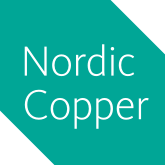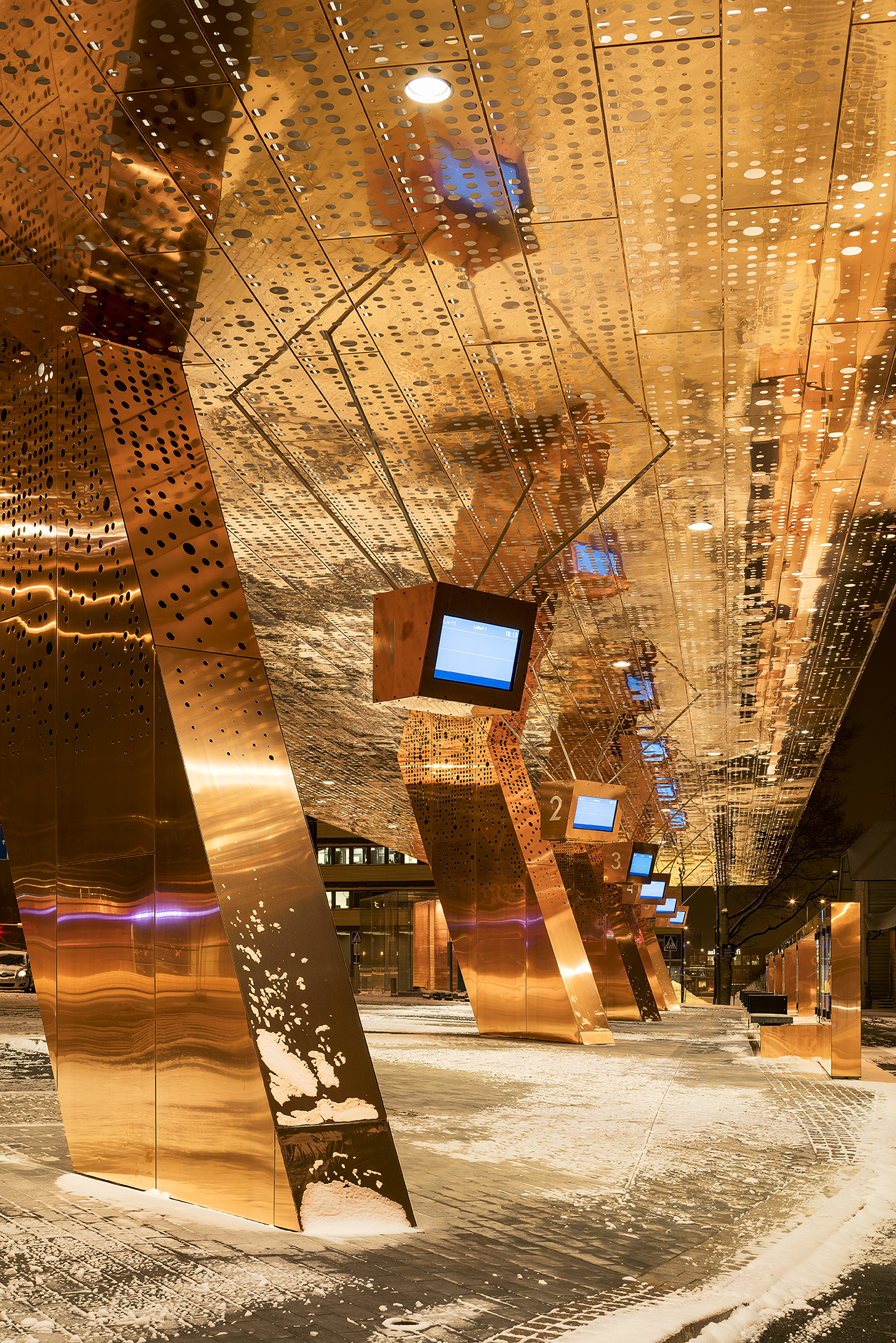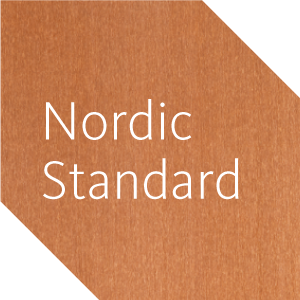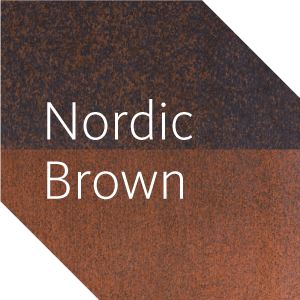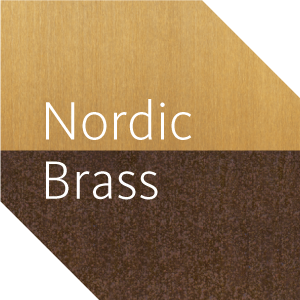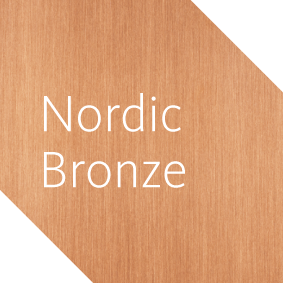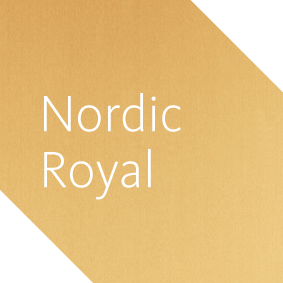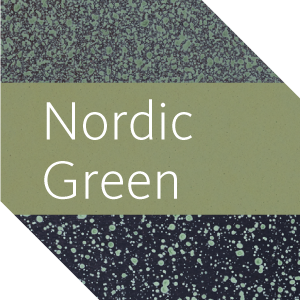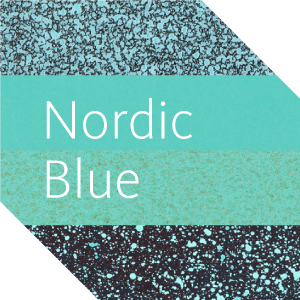Historically significant railway station, a solid red brick building from 1930’s, sets a characteristic milieu for the Travel Centre. Partially in front of it, on the new bridge deck built over Vesijärvenkatu, stands the new terminal canopy for the intercity busses. As perhaps the most prominent element of the new Travel Centre, the terminal canopy initiates a dialogue between the new and old elements. Its minimalistic sculpture-like form embraces the history of the area.
In terms of the cityscape, the Travel Centre provides a high quality and cohesive visual impression. The main materials, copper, glass and aluminium, were carefully chosen to meet requirements of the surrounding milieu. The canopy and pillars are clad in perforated copper. Next to it, the delicate and airy elevator tower uses glass in both the outer walls and load-bearing structures. Inside the glass shell is the elevator shaft, covered in copper and copper wire mesh. It is an elegant counterpart to the powerful and streamlined silhouette of the canopy. The two other elevator towers, also made of glass and copper, are located in the northern part of the area. The elevator towers connect the lower level street to the northern bus stop shelters on Mannerheiminkatu.
The space under the bridge deck is clad with anodized aluminium profiles. Noise reduction, general lighting and high-quality atmospheric lighting all are integrated behind the cladding. They create visually refined and acoustically pleasing environment to the tunnel-like space. The parts between the main structures – support walls, bridge railings, outdoor benches and walls – are all copper-clad as well. Together they create a portal when the viewer faces southwards.
The Travel Centre is used throughout the year and around the clock. Therefore special attention was paid to lighting. The electricity and HVAC equipment is hidden inside the structures. Light sources have been placed behind perforated copper parts in various elements and will enhance the character of the copper parts during the darker seasons.


